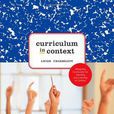媒體推薦
1. Why Design Curriculum and Instruction for Contextual Teaching and Learning? 2. Moving From Essential Questions to Statement of Purpose. 3. Overview of Curriculum Design Process and Models. 4. Designing Curriculum for Contextual Teaching and Learning. 5. Knowledge: Concept and Facts in Context. 6. Connecting Outcomes and Assessment. 7. Key Models for Contextual Teaching and Learning. Section II: DESIGNING INSTRUCTION FOR CONTEXTUAL TEACHING AND LEARNING. 8. Creating Instructional Units for Contextual Teaching and Learning. 9. Connecting Instructional Planning with Student Learning. 10. Creating Learning Environments. Appendix A: Sample Curriculum Designs. Appendix B: Sample Instructional Designs.
作者簡介
Leigh Chiarelott is a Professor of Education at Bowling Green State University (OH), where he is also Director of the School of Teaching and Learning. He has over 35 years of experience in teaching at the junior high, high school, and university levels. His research interests are in the areas of curriculum theory, design and development, and in teacher education theory and practice. Chiarelott is also author of CURRICULUM IN CONTEXT: DESIGNING CURRICULUM AND INSTRUCTION FOR TEACHING AND LEARNING IN CONTEXT (Wadsworth, 2006).
目錄
1. Why Design Curriculum and Instruction for Contextual Teaching and Learning?
2. Moving From Essential Questions to Statement of Purpose.
3. Overview of Curriculum Design Process and Models.
4. Designing Curriculum for Contextual Teaching and Learning.
5. Knowledge: Concept and Facts in Context.
6. Connecting Outcomes and Assessment.
7. Key Models for Contextual Teaching and Learning.
Section II: DESIGNING INSTRUCTION FOR CONTEXTUAL TEACHING AND LEARNING.
8. Creating Instructional Units for Contextual Teaching and Learning.
9. Connecting Instructional Planning with Student Learning.
10. Creating Learning Environments.
Appendix A: Sample Curriculum Designs.
Appendix B: Sample Instructional Designs.

